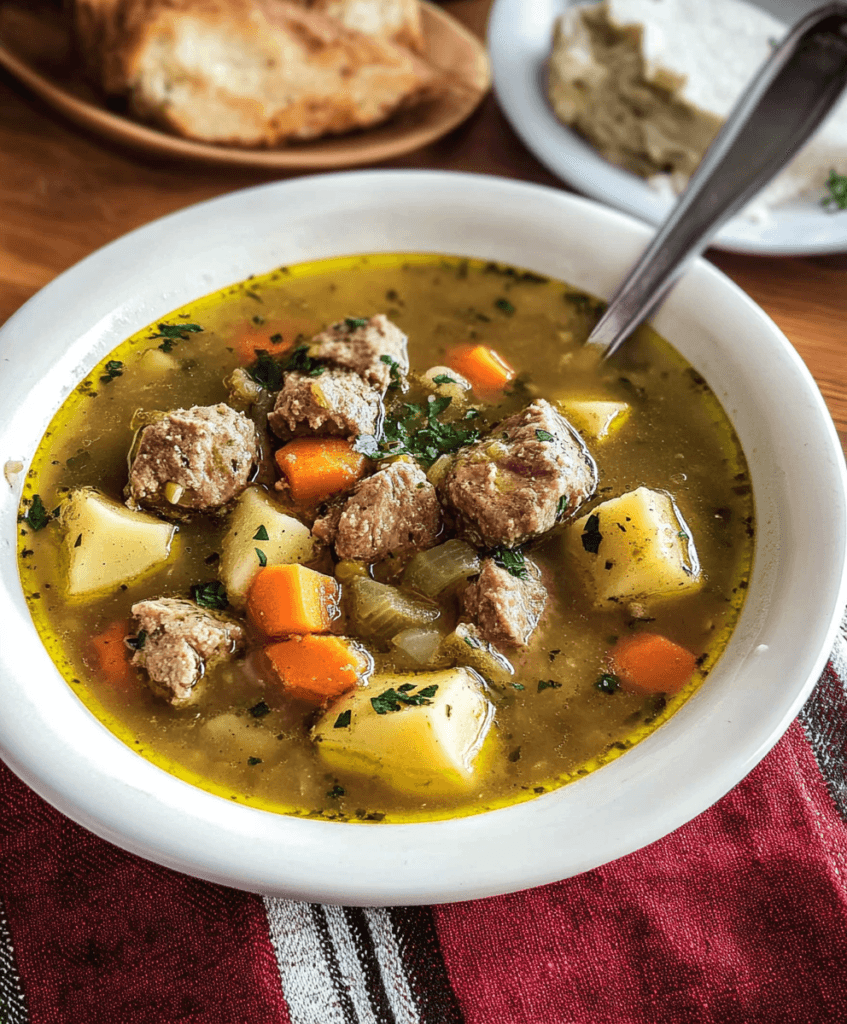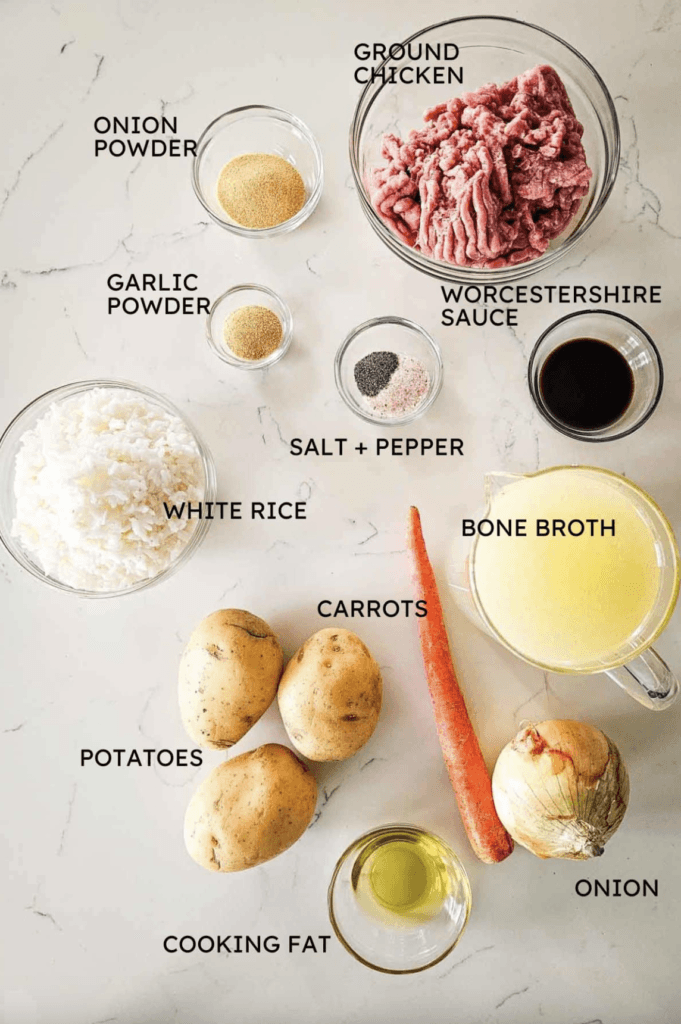Porcupine soup, despite its intriguing name, doesn’t actually contain any porcupine meat. This beloved comfort food earned its quirky moniker from the distinctive appearance of its main ingredients: meatballs studded with rice that puff up during cooking, resembling the quills of a porcupine. This hearty, warming dish has been gracing family dinner tables for generations, particularly in Eastern European and North American households.

Table of Contents
The Origins of Porcupine Soup
The exact origins of porcupine soup are somewhat clouded in culinary history, but many food historians believe it gained popularity during the Great Depression era when resourceful home cooks needed to stretch ingredients as far as possible. The combination of ground meat with rice served as an economical way to feed families during challenging times.
Variations of this dish appear in numerous cultural traditions. In Eastern European cuisines, particularly Polish and Russian cooking, similar meat and rice combinations have been staples for centuries. In North America, the dish became a fixture in community cookbooks and family recipe collections throughout the mid-20th century.
The pragmatic nature of porcupine soup reflects the practical wisdom of traditional home cooking—using simple, affordable ingredients in creative ways to create satisfying, nutritious meals. This approach to cooking resonated particularly during times of economic hardship, making the dish a symbol of culinary resilience.
The Classic Recipe
At its heart, porcupine soup features tender “porcupine” meatballs swimming in a flavorful tomato-based broth. The traditional recipe includes:

For the Meatballs:
- Ground beef (sometimes mixed with pork for added flavor)
- Uncooked rice (typically long-grain white rice)
- Finely diced onions
- Eggs as a binding agent
- Simple seasonings like salt, pepper, and garlic
For the Soup Base:
- Rich tomato broth (often made with tomato juice or sauce)
- Beef or vegetable stock
- Aromatic vegetables like celery, carrots, and additional onions
- Herbs such as bay leaves, thyme, or parsley
The magic happens during cooking when the raw rice in the meatballs absorbs liquid, expands, and pokes out from the meat—creating the signature “quill” effect that gives the dish its name.
The Cooking Process
The preparation of porcupine soup follows a rhythm familiar to many traditional recipes:
- Making the meatballs: The ground meat is mixed with uncooked rice, finely chopped onions, eggs, and seasonings. This mixture is then carefully shaped into small, golf ball-sized rounds. The key is not to overwork the meat, which can lead to tough meatballs.
- Preparing the broth: A flavorful base is created by sautéing aromatic vegetables, then adding tomato components and stock or water. Some recipes call for a slow simmer to develop flavor, while others are quicker.
- The gentle simmer: The meatballs are carefully added to the hot—but not boiling—liquid and cooked at a gentle simmer. This slow cooking serves two purposes: it allows the meat to become tender and gives the rice time to absorb liquid and cook thoroughly. This typically takes 45-60 minutes, during which the broth reduces and intensifies in flavor.
- The finishing touches: Fresh herbs are often added toward the end of cooking, and the soup might be adjusted with additional seasonings. Some recipes call for a small amount of sugar to balance the acidity of the tomatoes.
Regional Variations
Like many traditional recipes, porcupine soup has evolved through regional adaptations:
- Midwest American versions often lean heavily on tomato flavors and might include additions like corn or green beans. In some variations, the dish is prepared as more of a stew than a soup, with less liquid and a thicker consistency.
- Eastern European variations might use barley instead of rice and incorporate cabbage or beets. These versions often feature a tangier broth, sometimes with the addition of sour cream or fermented vegetables.
- Mediterranean-inspired versions might feature lamb instead of beef and include herbs like mint or oregano. The broth might be lighter, with less emphasis on tomato and more on clear broths infused with herbs.
- Contemporary adaptations often incorporate global flavors with additions like cumin, paprika, or even curry spices. Some modern interpretations use alternative grains like quinoa or farro in place of traditional rice.
You may also like Coconut Curry Chicken Soup.
Nutritional Value and Modern Appeal
Beyond its comforting taste, porcupine soup offers substantial nutritional benefits. The combination of protein from meat, carbohydrates from rice, and vitamins from vegetables creates a well-balanced meal in a single pot. The dish is particularly notable for:
- Complete protein from the meat component
- Complex carbohydrates from the rice
- Fiber and vitamins from the vegetable components
- Lycopene (in tomato-based versions), which has antioxidant properties
In today’s health-conscious food landscape, porcupine soup continues to find relevance. Many contemporary cooks make modifications like using lean ground turkey or chicken instead of beef, incorporating brown rice or other whole grains, and increasing the proportion of vegetables. These adaptations maintain the spirit of the original while aligning with modern nutritional priorities.
Cultural Significance
More than just sustenance, porcupine soup represents the ingenuity and resilience of home cooking traditions. It’s a testament to how humble ingredients can be transformed into something special through creative preparation. The dish continues to be passed down through generations, with each family often developing their own signature twist.
For many, the appeal of porcupine soup extends beyond nutrition—it’s a dish wrapped in nostalgia, often associated with childhood memories of family gatherings and cold-weather meals. In an age of fast food and instant gratification, this slow-cooked, thoughtfully prepared dish reminds us of cooking’s power to nurture both body and soul.
Whether you’re discovering it for the first time or revisiting a childhood favorite, porcupine soup offers a delicious window into culinary heritage and the enduring appeal of comfort food done right. As with many traditional recipes, its staying power lies not just in its flavor but in its ability to connect us to our collective culinary past while nourishing us in the present.
Find out more about Tom Kha Soup.
Frequently Asked Questions About Porcupine Soup
Does porcupine soup actually contain porcupine meat?
No, porcupine soup does not contain any porcupine meat. The name comes from the appearance of the meatballs after cooking, where the rice grains poke out and resemble porcupine quills. The dish is typically made with ground beef or a mixture of ground meats combined with rice.
Can I make porcupine soup in a slow cooker or Instant Pot?
Yes, porcupine soup adapts well to both slow cookers and pressure cookers. For slow cookers, form the meatballs, place them in the cooker with the broth ingredients, and cook on low for 6-8 hours. For Instant Pot preparation, use the sauté function to brown the meatballs lightly first (optional), add the broth ingredients, then pressure cook for about 15-20 minutes with a natural release.
Is porcupine soup freezer-friendly?
Porcupine soup freezes exceptionally well, making it a perfect make-ahead meal. Allow the soup to cool completely before transferring to freezer-safe containers. Leave some space at the top for expansion. The soup can be frozen for up to 3 months. Thaw overnight in the refrigerator and reheat gently on the stovetop for best results.
Can I make porcupine soup with alternative grains instead of rice?
Absolutely! While traditional recipes call for white rice, you can substitute other grains with good results. Brown rice works well but may require longer cooking time. Barley creates a hearty, rustic version popular in Eastern European variations. For modern adaptations, quinoa, farro, or even cauliflower rice can be used, though cooking times and liquid ratios may need adjustment.

Porcupine Soup: Traditional Rice Meatball Comfort Food
Equipment
- Large pot
- Mixing bowl
Ingredients
For the Meatballs
- 1 lb ground beef or mix with pork
- ½ cup uncooked long-grain white rice
- 1 small onion finely diced
- 1 egg beaten
- 1 tsp salt
- ½ tsp black pepper
- 1 tsp garlic powder
For the Soup Base
- 4 cups beef broth
- 2 cups tomato sauce
- 1 cup carrots sliced
- 1 cup potatoes diced
- 1 stalk celery chopped
- 1 bay leaf
- 1 tsp thyme
- to taste fresh parsley for garnish
Instructions
- In a mixing bowl, combine ground beef, rice, diced onion, egg, salt, pepper, and garlic powder. Mix gently and form into small meatballs.
- In a large pot, heat the beef broth and tomato sauce over medium heat.
- Add the carrots, potatoes, celery, bay leaf, and thyme. Stir to combine.
- Gently place the meatballs into the soup, ensuring they are submerged.
- Bring to a gentle simmer and cook for 45-60 minutes until the meatballs are fully cooked and the rice is tender.
- Remove the bay leaf, taste the soup, and adjust seasoning if needed.
- Serve hot, garnished with fresh parsley.
